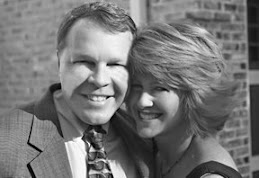 Finally, after six drays of trekking, we arrived at Machu Picchu!
Finally, after six drays of trekking, we arrived at Machu Picchu!Talk about a happy accident. Yale historian Hiram Bingham, the man credited with re-discovering Machu Picchu, the Lost City of the Inca, was actually on the hunt for another city when he happened into this magical site. Bingham and his team of explorers arrived in Cusco in 1911 with hopes of finding Vilcabamba, the LAST city of the Incas. Since the local Quechan language is spoken and not written, little survived from the Incan times to tell of Machu Picchu (meaning Old Mountain in Quechan.) Local maps to Vilcabamba showed another settlement and as Bingham headed off to Vicabamba, he uncovered Machu Picchu which lay directly in its path through the Sacred Valley. Actually, locals continued to farm the flat, sunny terraced areas of the city and the Incan Trail had served as a local supply route since ancient times. The site had gone undiscovered by Spanish conquerers and later explorers due to its heavily overgrown vegetation. Even from nearby Agua Calientes, you can look directly up to the site and not see it. Bingham later returned to the site in 1915 with a band of scientists to uncover remains and begin research.
The real boom to the city came in 2007 when the site was named one of “The Seven Wonders of the World.” This led to efforts by UNESCO and the Peruvian government to carefully restore and preserve the site. Daily crowd limits to both the site and the Inca Trail serve as a means to keep the site intact.
Built in the mid-15th century, Machu Picchu was a sanctuary for Incan royalty. The landscape is stunning with orchids and the massive cliff face of Huayna Picchu towering overhead. The city is divided into three sections- the Sacred District, the Popular District and the District of the Priests and Nobility. The architecture and location indicate the site is a sacred place. Numerous nearby archeological sites such as the one we visited the day before all face Machu Picchu. As with other sacred buildings, the finest craftsmen build the site’s temples using perfectly fitted stones and no mortar. Agricultural and less important structures use rougher stones and mortar. Incan architectural elements such as trapezoid windows, inward slanted walls and terraced planting areas reinforce the stability of Incan building and city planning techniques.
Theories abound as to why the city was abandoned. Some speculate it served as the estate of a local ruler and was deserted upon his death. Others theorize that disease brought by Spanish conquerors ultimately led to the city’s demise.
When he left in 1915, Bingham took 174 boxes of human remains and artifacts to the U.S. for further study. Most reside today in the Peabody Museum in CT and the Peruvian government continues to negotiate the return of these artifacts.
What a fitting end to our journey. After an overnight stay in Cusco, I’m headed off to the Peruvian Amazon.

1 comment:
Imagine this was the cradle of civilization....ever wonder what destroyed this amazing civilization????? The Inca were so advanced hard to imagine carving out this amazing culture in the middle of no where..someday I will get there to see for myself...Thanks for sharing..Dawn
Post a Comment